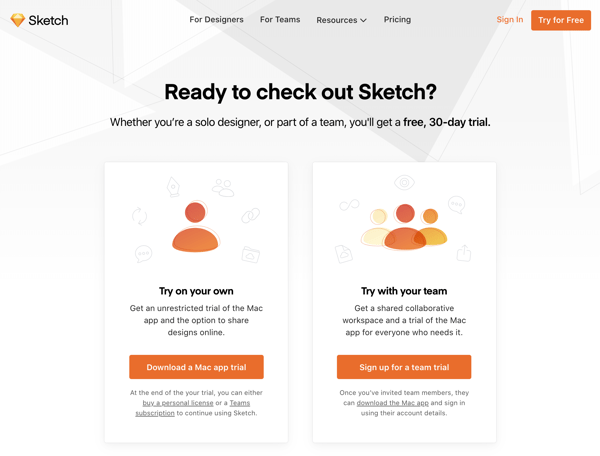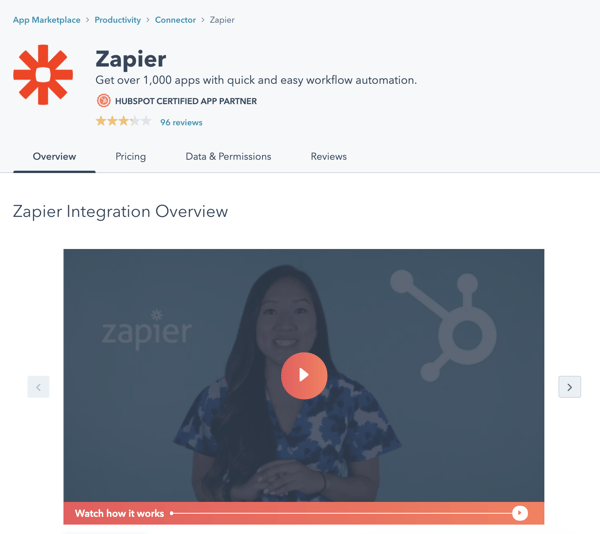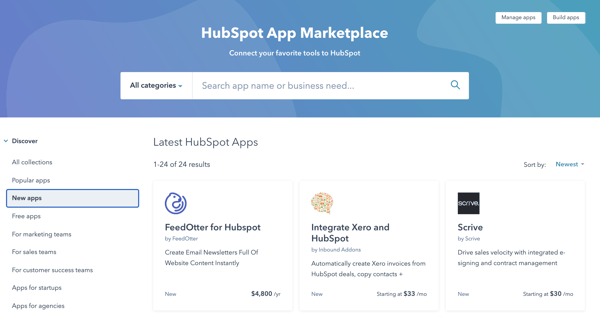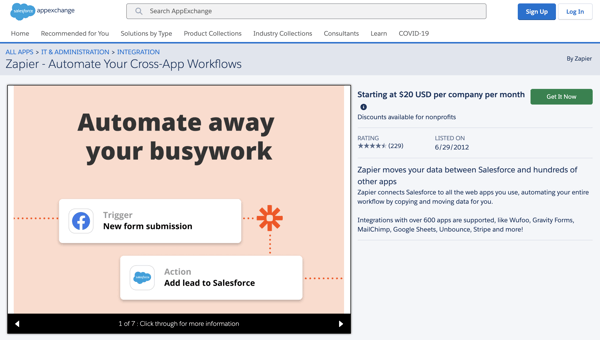As a SaaS marketer, your integrations to other platforms could be one of your most valuable assets. The world’s most successful SaaS companies use native integrations to boost trust, find audiences, and improve their product. If you’re not using your app integrations as a marketing tool, you should start sharing more about those partnerships, and help your potential customers discover your solution. Get started with important tips from this article, and share it with your product team. The best marketing happens when teams work together to highlight what’s best about the solution — and for you, that just might be your helpful integrations.

Boost Trust by Highlighting Your Integrations
Use your integration options to build trust by association. One very simple way to start out is by including a section on your homepage that features logos of the big-name (or small-name) platforms that your solution will work with, and linking to specific information about how the solution enhances your reader’s use of those platforms. Seeing the logo of a software platform like Salesforce or Shopify on your website serves to signal that your company is trusted by those brands, and can possibly benefit you without changing the way you do business at all, just the way you highlight your relationships.
Beyond reputation-building, this type of signaling also generates trust in your technology. The idea is, your solution is probably pretty good if you can work together with well-known platforms or apps. For example, if a big name like HubSpot trusts your integration enough to offer it to their users, your solution, and by extension, your brand, are probably also trustworthy. It’s like seeing “9 out of 10 dentists recommend” your toothpaste. It is trust by association.
Recognizing a logo on your list of partners generates an immediate level of trust.
Find Audiences: SaaS Marketplaces
In addition to showcasing your most important integrations within your own website, marketing, and community content, you can find new audiences by making sure you’re featured on their sites as well. Many major platforms — like Salesforce, HubSpot, G-Suite by Google, or Asana — have entire marketplaces with apps and add-ons that can be used to enhance your experience and the effectiveness of the platform. If you integrate with one of the platforms that has its own marketplace, making sure you’re listed in it — or, even better, featured and recommended — is a wonderful opportunity for marketing.
Creating Profiles on App Marketplaces
Most marketplaces allow you to create your own profile, and manage and respond to reviews, but most have criteria for joining in the first place. HubSpot, for example, has its App Partner Program, which requires at least 3 unique app installs before they’ll even consider letting a new solution in. Building communities within marketplaces, especially ones that feature great reviews of your solution, is an important piece of using your integrations as a marketing tool. Simply being vetted and available with larger platforms and marketplaces provides your SaaS solution with immediate validation, and is a source of exposure and PR for your brand.
Here's an example of how apps are featured on HubSpot's Marketplace:
Even many smaller platforms will have a partner directory listing for apps and plugins. For example, Sketch, a graphic design and collaboration platform, features its favorite plug-ins from 3rd party developers with a searchable directory.
 Don’t miss the importance of these one-off sources for new audiences. Get creative, and propose a cool partnership with one of them, perhaps with a special offer for a segment of their customers. Sometimes more relationship building and creative collaboration is possible in a more intimate business context.
Don’t miss the importance of these one-off sources for new audiences. Get creative, and propose a cool partnership with one of them, perhaps with a special offer for a segment of their customers. Sometimes more relationship building and creative collaboration is possible in a more intimate business context.
Cultivating Reviews on App Marketplaces
One of the best ways to find your best new customers is to tap into your best current customers. Don’t be shy about requesting reviews from the people who use and love your solution every day. Positive reviews are one of the most effective ways to gain new customers. People want to feel like they are making a good choice when it comes to a SaaS solution. Help them get the social proof they need by cultivating great reviews on the app marketplaces.
There are several great ways to go about requesting reviews. You can:
- Display in-app review requests
- Send out a personalized request via email
- Run an incentive-based campaign on social media
- Add an enticing review request section to your login screen, or other customer-focused areas of your website.
Integrations Marketing Example: Zapier
If you’ve worked in the digital world in any capacity, you’ve heard of Zapier. It’s a solution that allows you to automate repetitive tasks between virtually any two (or more) apps. Integrating apps is literally Zapier’s entire business. Let’s look at how Zapier highlights its app integrations on both its own site as well as on its app partners’ marketplaces.
How Zapier Features its App Integrations on its Own Website
On its “Apps that work with Zapier” page, the company features over 2,000 apps it works with, from Trello to ActiveCampaign, to Instagram and so many more. Each app has its own standalone landing page on the Zapier website, like this one. And going even further, they also make landing pages highlighting different combinations of app integrations you can do as well — like this.
 You can search by app, or your own job role, and even recommend apps they should add to their integration capabilities. Zapier is the king of using integrations to market itself!
You can search by app, or your own job role, and even recommend apps they should add to their integration capabilities. Zapier is the king of using integrations to market itself!
How Zapier Features Itself on its Partner App Marketplaces
Aside from the way it features its integrations on its own site, Zapier also does a great job of featuring itself on partner marketplaces. This allows Zapier to spread out its reach, and connect with folks using popular platforms of all types.
On the HubSpot App Marketplace, for example, Zapier focuses on its key benefits and popular uses inside the platform. It also offers resources like a setup guide and a case study for users interested in knowing more. One of the most enticing things about Zapier’s integration overview on the HubSpot marketplace is that the explainer video about what it does and how to use it with HubSpot is actually delivered by one of the teachers from HubSpot Academy. It’s a subtle, but crucial, endorsement of the solution.
 Over on the Salesforce AppExchange, Zapier focuses on how it moves data between Salesforce and “hundreds of other apps.” Featured prominently in Zapier’s listing on the Salesforce Appexchange is a 7-slide deck focused on the main benefits and presents several customer testimonials. It’s like a mini-marketing campaign within the listing. Together with detailed information on what to integrate with the Salesforce platform, using Zapier, the listing is an effective draw for new users.
Over on the Salesforce AppExchange, Zapier focuses on how it moves data between Salesforce and “hundreds of other apps.” Featured prominently in Zapier’s listing on the Salesforce Appexchange is a 7-slide deck focused on the main benefits and presents several customer testimonials. It’s like a mini-marketing campaign within the listing. Together with detailed information on what to integrate with the Salesforce platform, using Zapier, the listing is an effective draw for new users.
Show Off Your Relationships. Build Your Business.
In SaaS marketing, reputation is everything, especially if you’re a relatively new solution. That’s why it’s incredibly important to use your relationships with other popular apps, or bigger brands than your own to build trust and find audiences.
Originally published August 2020, updated August 2021


